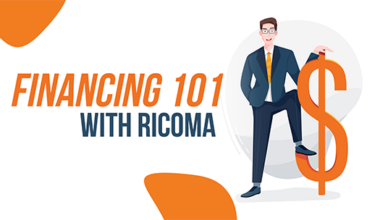Whether it’s school uniforms, sports teams, fraternities or sororities, finding and owning a niche guarantees you a spot as the go-to company for a specific industry.
Why is this important? Once you land the right deal with a certain type of business, earning more deals in that industry will become easier and easier as long as you play your cards right. We will discuss the best way to reach out to those niches below, but first, here’s a success story.
“Every year on picture day in school, we would always see the same photographer. So much so in fact that some of the kids even knew him by name! Once senior year came along, we were required to find a photographer outside of school to take pictures of us for the senior class section. Thankfully, this task came easily because we really only knew one photographer…”
“Glutz Photography even convinced our school to host an assembly just to prepare us for our senior portraits. There, they made a commitment to the entire senior class that they would give us special discounts on their services! It was really a no-brainer. We took their pamphlets home to our parents and the deal was done. Glutz photography just gained over 300 new clients. And they did this every year to every school in our county.”
Glutz Photography dominated the school niche, and they did it well.
Now, let’s talk about how you can use this model to dominate a niche in your industry.
First, start with a specific company — or companies. Find your niche. One benefit to being a small local business is that companies around you want to support you rather than giving their money to another large corporation. Use proximity to your advantage. Begin by scouting locally to build your list of clients.
Once you have compiled a solid list of potential clients, convince them that they need you. This is where marketing comes into play. Start by researching your prospective niche. What do they need? How do they operate? What is their volume? What are they lacking that you can help them achieve? You need to position your marketing in a way that solves their issues, specific to their niche.
Let’s take a school for example. A school is an ideal niche for anyone. Every year hundreds of new prospects will be exposed to your services year after year and through word of mouth, those prospects can grow into the thousands.
Let’s say this school already uses an embroidery shop. You need to think, “That’s ok, because I’m a better embroidery shop and I’m going to show you why”. But first you need to find the decision maker.
After you have found them, it’s time for you to make your pitch. Here are some things to prepare for this crucial sell.
- Come prepared with samples of your best work related to their industry. For schools, bring a letterman jacket or a sports jersey. Show them the quality of your work.
- Come prepared with new ideas for related services. Maybe students will want custom embroidery on their graduation gowns!
- Be prepared to talk numbers. Are you more affordable than your competitors? Prepare exact numbers on the potential savings that they can expect working with your company over time. You can also offer potential deals, just like Glutz offers seniors discounts on their senior photos.
- Prepare testimonials of previous happy customers. If you are a new business, start by offering a complimentary service to get your foot in the door.
- Be prepared to call out your competitors. What are they doing wrong and how can you fix it?
- Finally, leave them with something to remember you by. Prepare some collateral outlining your services and contact information. For example, a pamphlet with photos of your work, a list of services, your location, your social media handles and a URL to your website. (And of course a business card) You never know who may come in contact with your information, so it’s always good to include as much about you as possible.
Note: Be prepared to have enough collateral to make the same presentation to all of your leads.
Once your foot is in the door, you may think that your work is done. On the contrary, your work has just begun. Now is the time to prove yourself. If this is the first client in your niche, you should be soaking up as much out of the experience as possible to use as collateral for your next pitch.
Your first customer will provide you with your first niche-related testimonials and work samples. We recommend gathering all of this as you go along so that you are not rushed if a potential lead comes your way.
Here are some tips specifically about testimonials:
- Just one won’t do. It usually takes a lot of good testimonials to defeat a bad one. Constantly request testimonials from happy customers.
- Make sure your list of testimonials isn’t all about the same thing. For example, one testimonial might cover the quality of your product, while another can cover how great your service was or how fast they received their product. Make sure your testimonials cover all aspects of your business.
While working with your new client, take the opportunity to learn even more specifics about their industry including their lingo, their competitors and related businesses. Use this information to command your future proposals.
Want to see one of our machines in action?
Schedule a free virtual demo if you want to see any of our machines in action. In it, you can ask any questions you have about the industry and see exactly how to start and run an embroidery project in real time.






